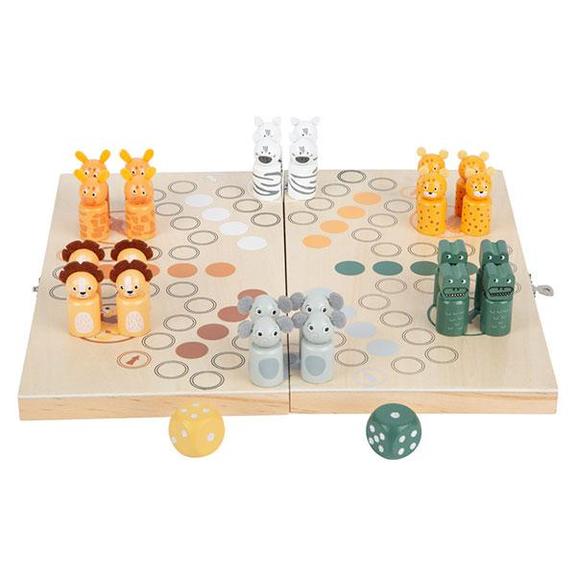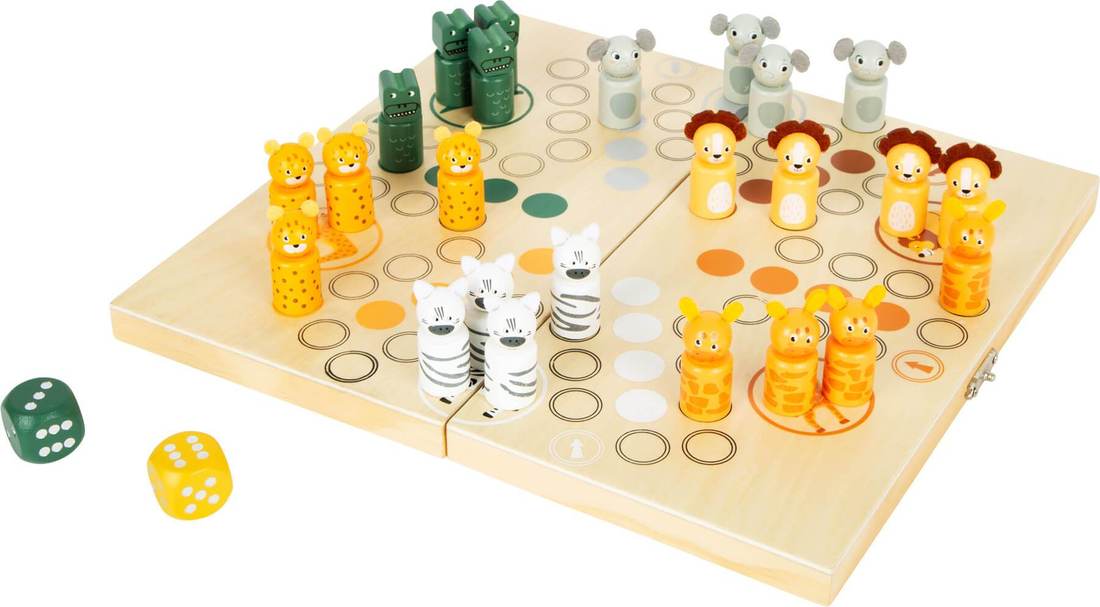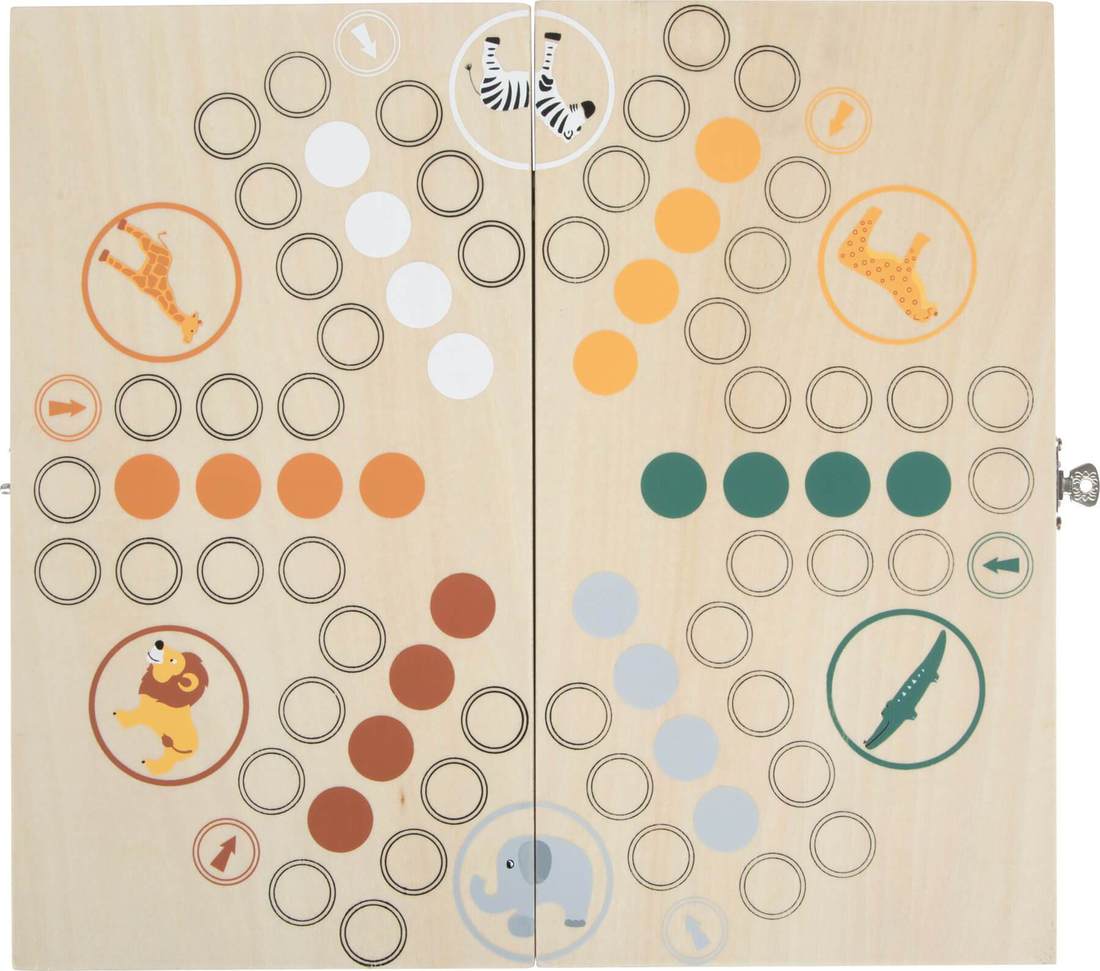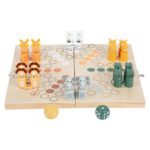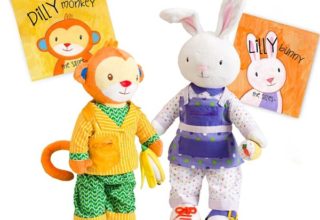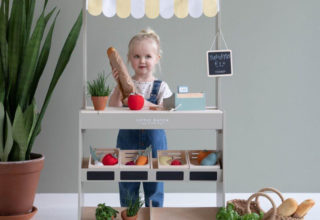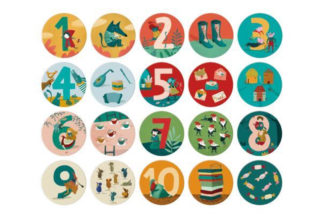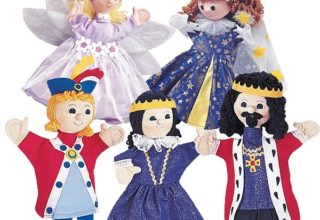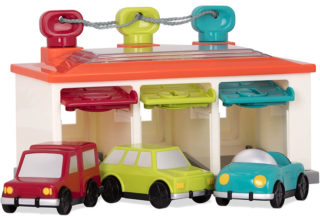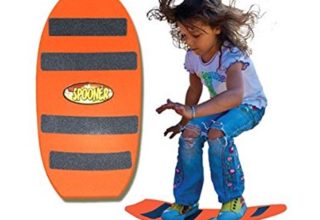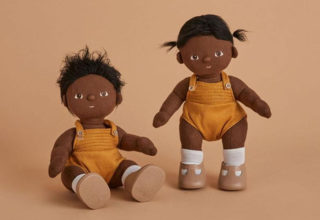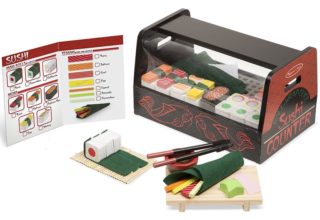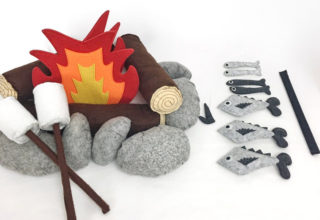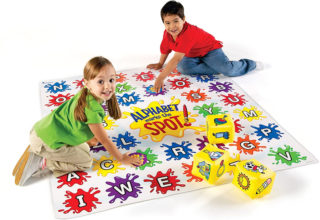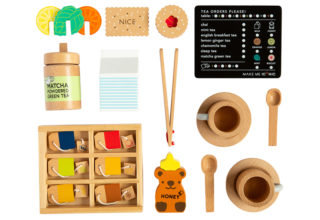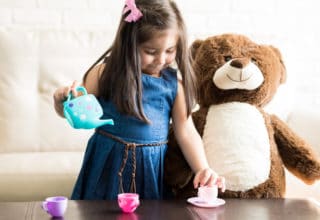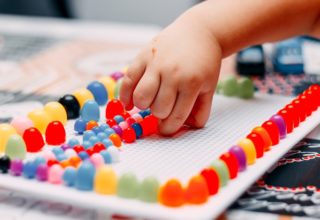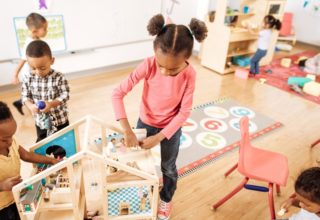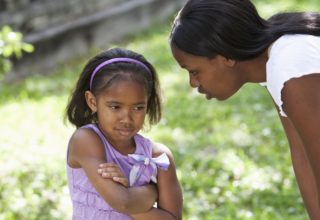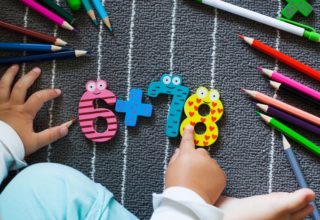A sweet take on a classic game. The novel figurines (felt ears! felt manes!) amp things up. A great family game that encourages taking turns, learning to count and 1:1 correspondence. Ideal gift for siblings.
Learn letters with a classic game. There’s a reason it’s a classroom favorite. Ditto for the numbers edition.
Master everyday skills with these clever stuffies. Strengthens fine motor skills with real-life finicky accessories – buttons, zippers, laces, buckles,...
Sorting, classifying, organizing, oh my! This charming stall from the Netherlands is great for practicing early math concepts, communication and...
A clever take on Memory. Pair number symbols with magnitude concepts (learn to count!) using uniquely illustrated artwork from 10...
Work through big feelings with this character set. Or try modeling behavior with Jolly Helpers.
Teaches cause and effect and sorting, an early math skill. Interactive play with keys creates storytelling and back-and-forth interactions. Beloved...
Improve core strength, balance and coordination. An essential in many classrooms. Equally fabulous at free play as it is for...
The softest, snuggliest friend with moveable arms and legs that stands and sits. Dolls are wonderful at personifying a child’s...
A very grown-up dining experience; bonus points for building fine motor skills.
Made of felt, this is one of those unique playsets that is timeless fun. It’s all in the details –...
A social and screen-free way of learning letter identification, including phonological awareness and concepts of print. Get moving!
Found! One of the most unique tea sets yet made by a Melbourne-based toy company. Fully-equipped with biscuits, tea bags...
How to structure the day at home with your child, specifically extended time periods at home is hard. Here’s our...
Getting to know your child’s imaginary friends is a fun perk of parenting and teaching. Those characters – whether invisible,...
Knowing why a child hits is the first step in handling a challenging ‘hitting’ situation. Next, how should you respond...
Around the ages of four and five, children begin to tell ‘tall tales’. They may also begin to tell fibs...
As parents and teachers of young children, we encounter ‘power play’ in a variety of ways – some children like...
Simply saying “Share!” holds little meaning for children. Young children are egocentric and concrete thinkers. Their experience of the world...
*Yet* – Three letters that may change your child’s outlook on life, even among the youngest learners. Learn how the...
When all the other pieces – like grasp and strength – are in place, it may be time to practice....
Are you in the midst of visiting preschools and trying to decipher what to look for in a classroom and...
One of the most frequent questions we get from parents is, “How do I get my child to listen?” It’s...
“What is a good resource to understand milestones for my child? At what age should they learn colors? Learn numbers?...
Kindergarten is a meaningful adjustment – for parents too. We’ve got simple tips for parents for a not-so-simple transition –...
